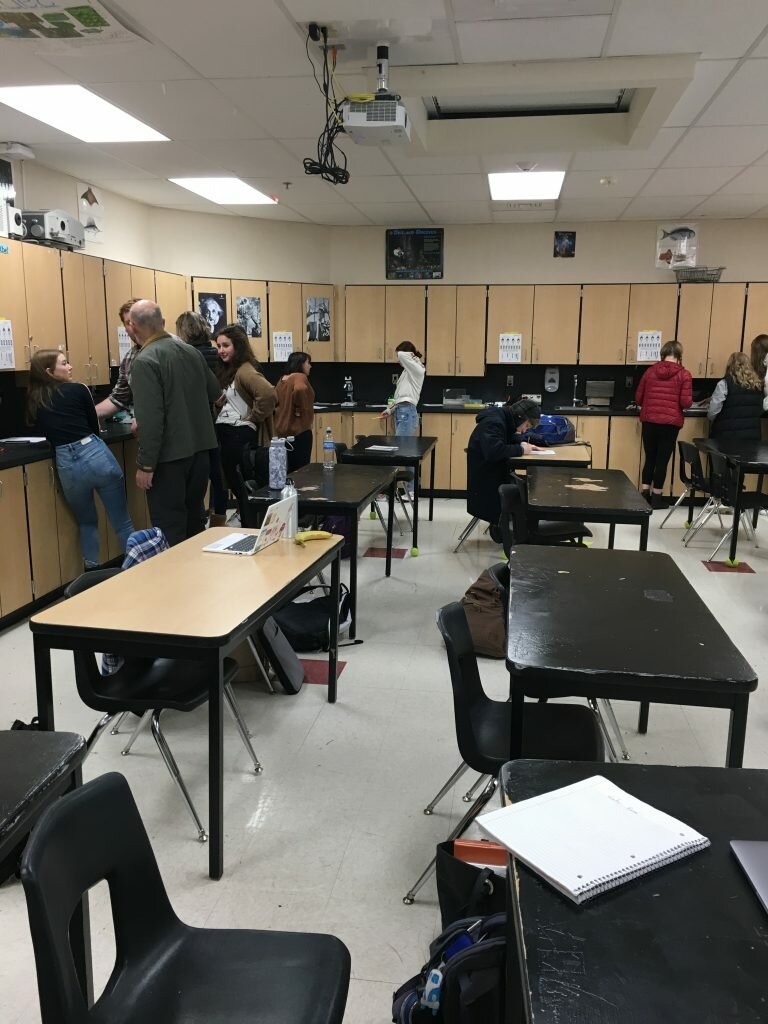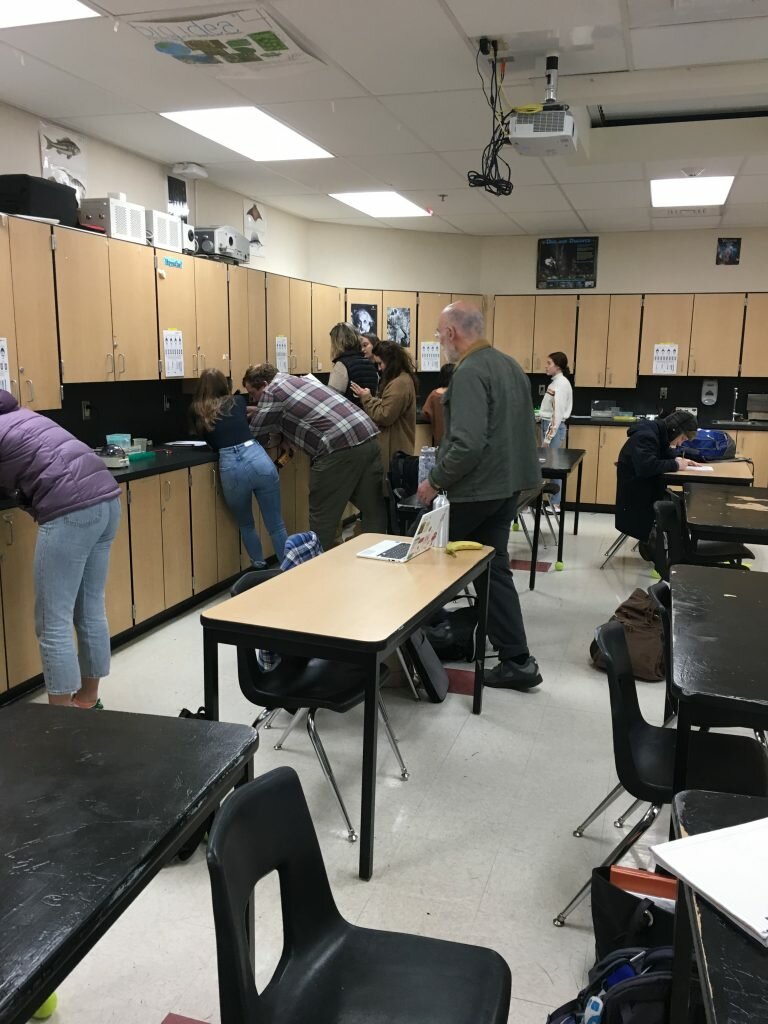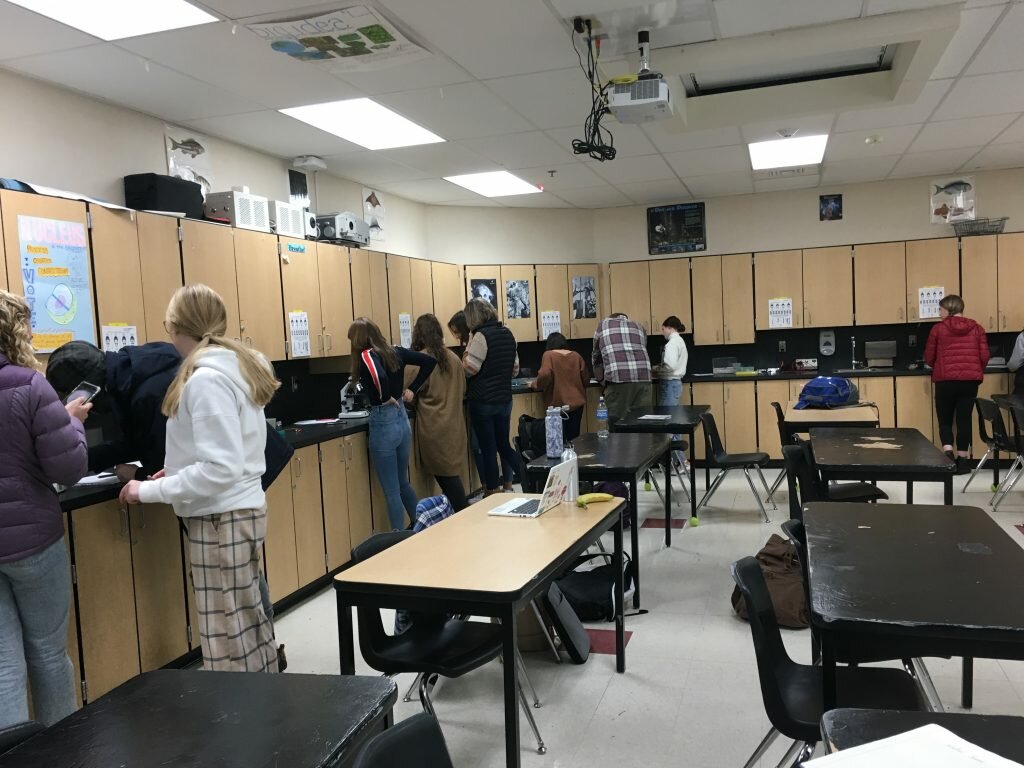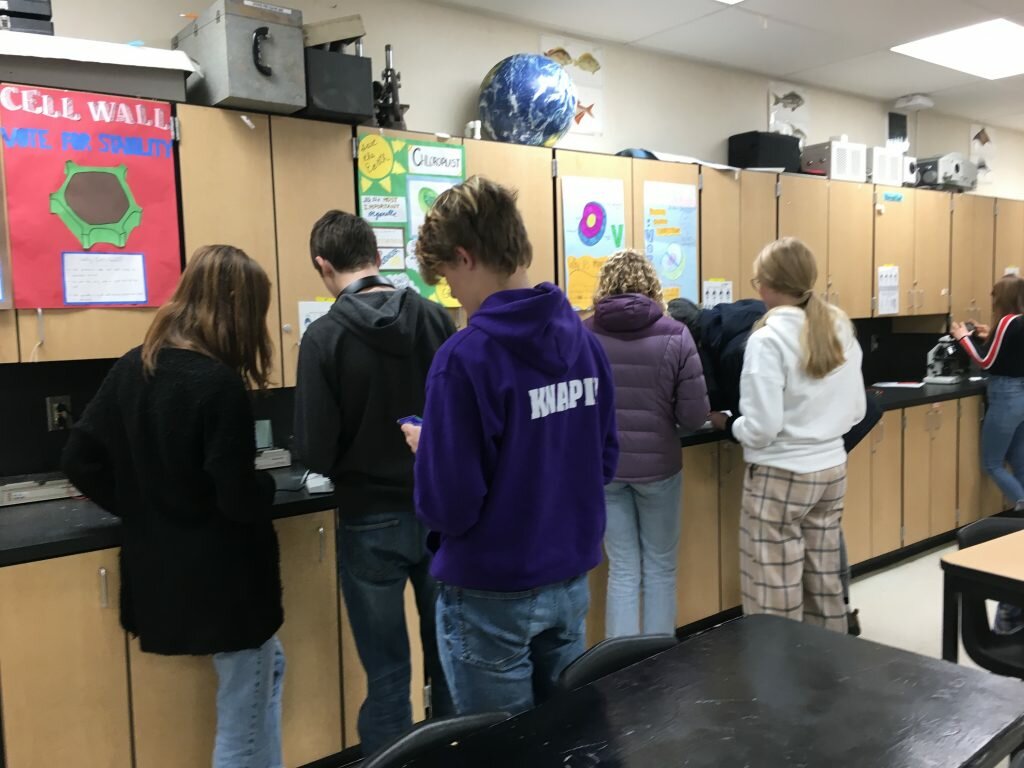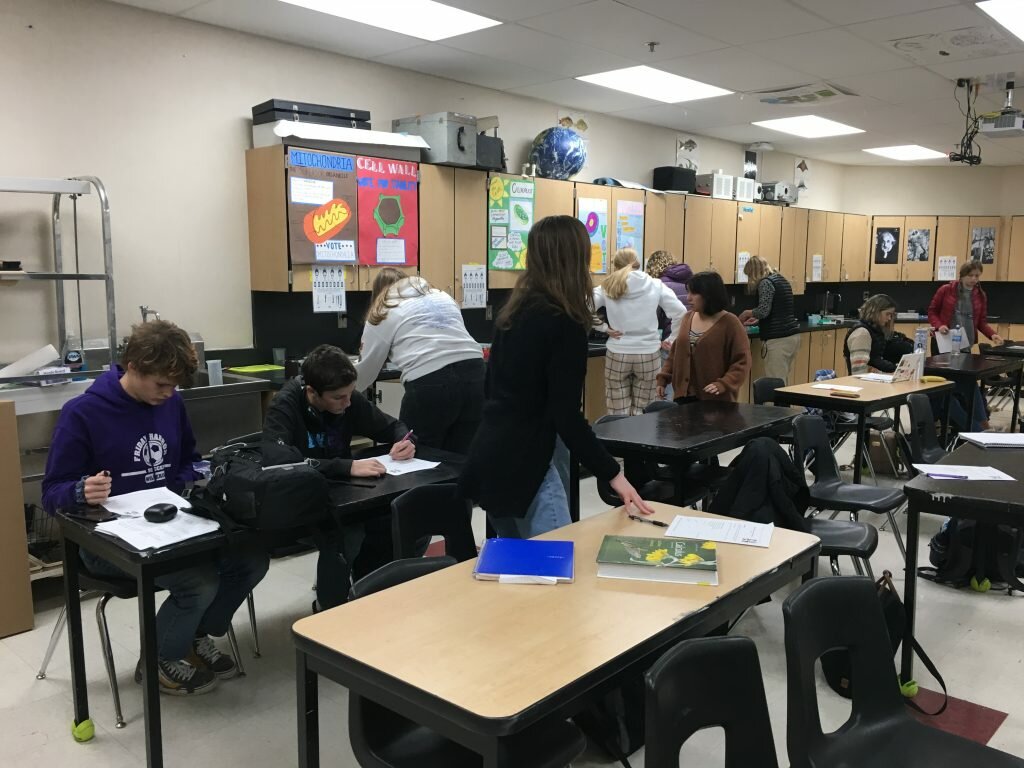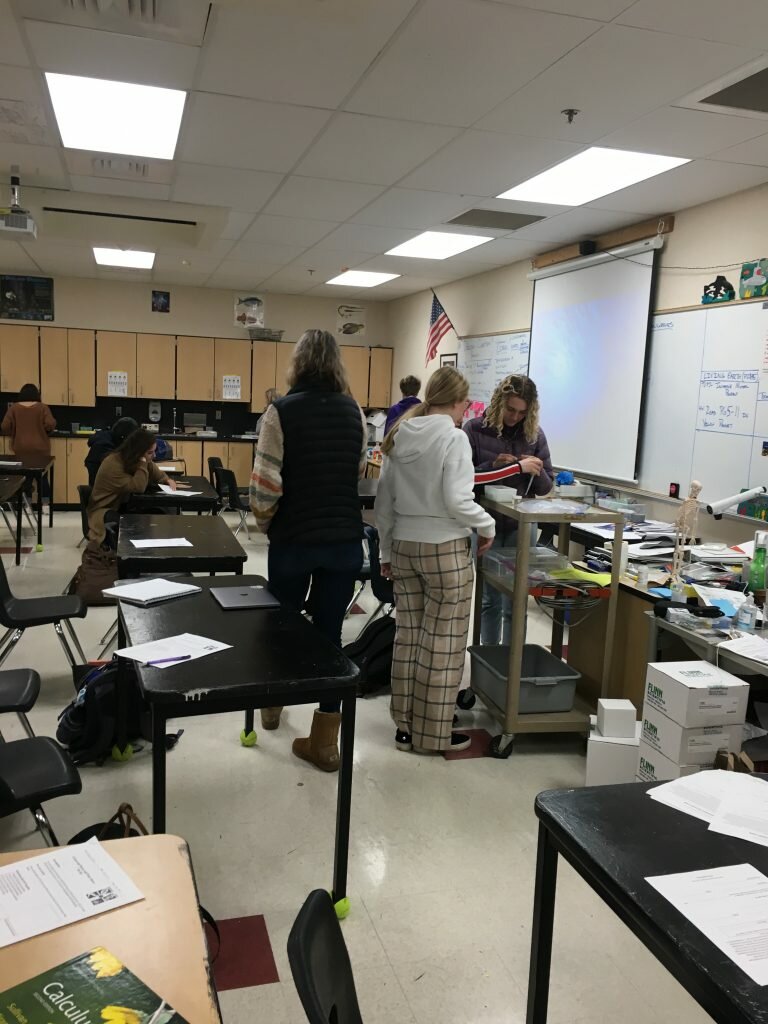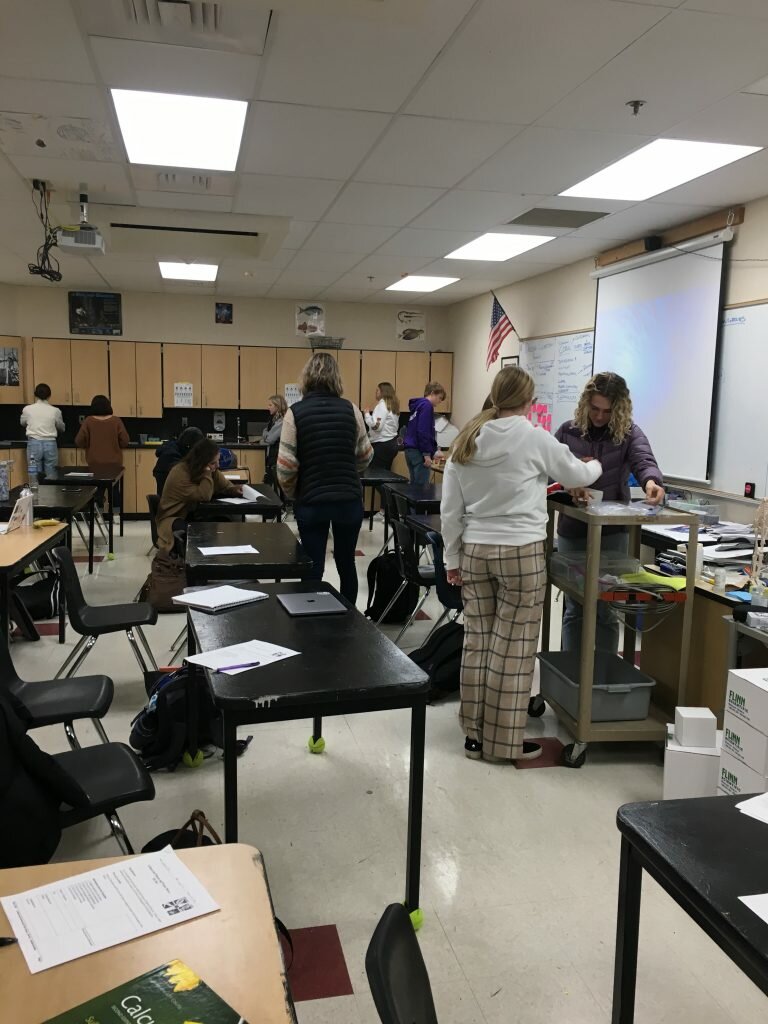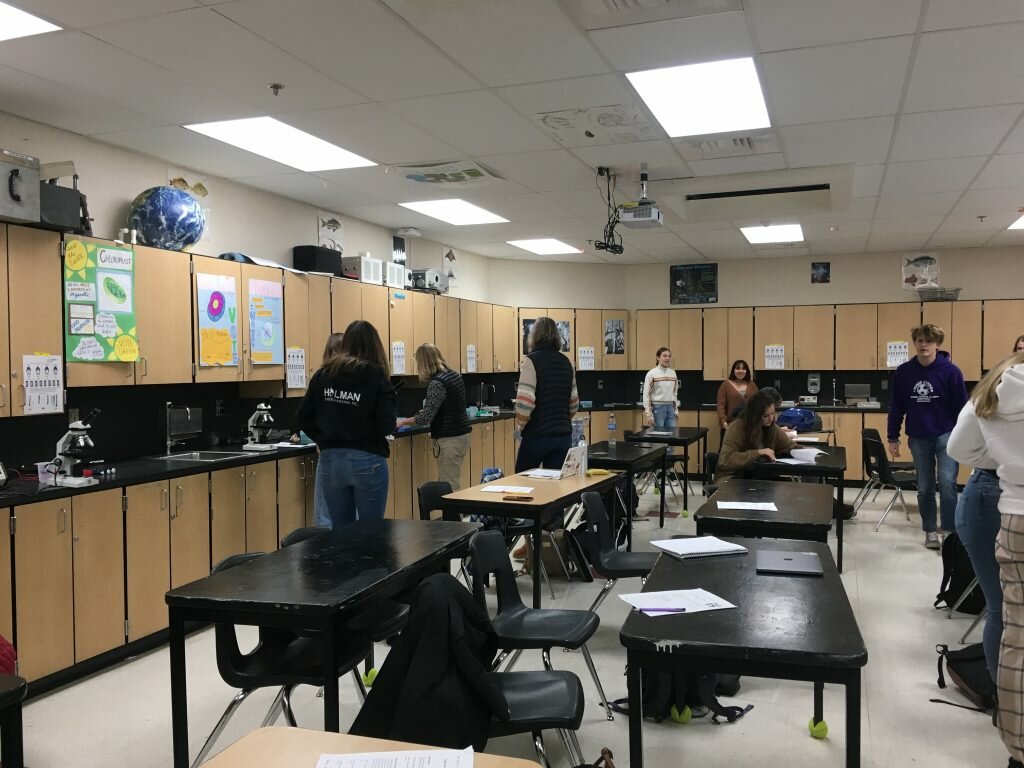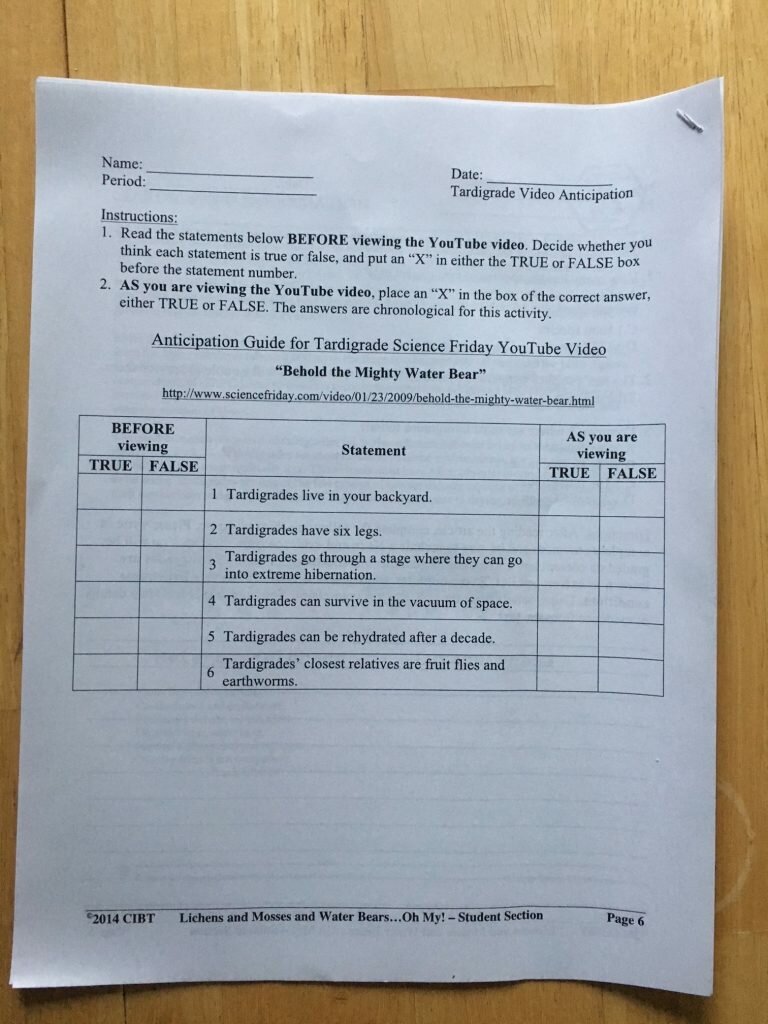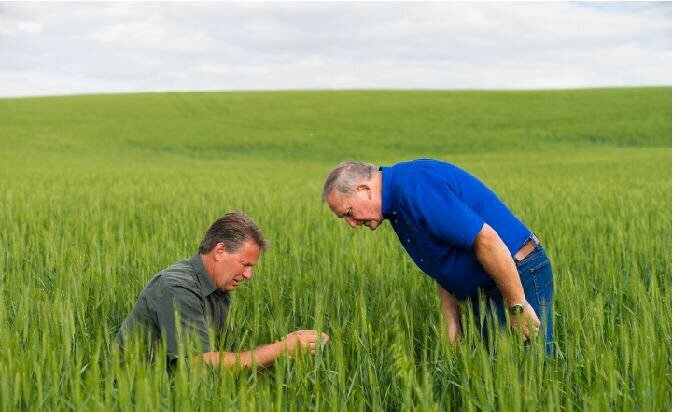Last week, Lynn Bahrych delivered 30 living tardigrades to the science classes at the Friday Harbor High School on San Juan Island. The tardigrades will be studied and hopefully “cultured” in the classroom as part of a campaign to have the tardigrade designated as Washington State’s “Micro-Animal.”
On November 12, 2019, following the delivery of the tardigrades, Lynn and a volunteer marine biologist and videographer, Dr. Michael Noonan, joined Sam Garson, the Friday Harbor High School science teacher, to introduce the project to his science class. Mr. Garson had prepared slides for the classroom microscopes, as well as a worksheet (titled “Behold the Mighty Water Bear”) and video introductions of the tardigrade and the research being done on it now to study evolutionary development (”evo devo”).
Not much is known for sure about tardigrades, so these students might be able to contribute something new to the field. Tardigrade ecology is in its “infancy,” according to experts. Exciting new ideas may come from the three classrooms across the state participating in this project. In addition to the Friday Harbor High School on San Juan Island, the Riverday School in Spokane, and the Roosevelt Middle School in Olympia are studying the enigmatic “moss piglet” or “water bear.”
For the state designation of the tardigrade, there are three state legislative sponsors at this time; Representative Jeff Morris of District 40, who is the primary sponsor, Senator Debra Lekanoff also from District 40, and Representative Marcus Riccelli from Spokane. Once the bill is filed in Olympia, other legislators will be invited to sign on.
This is the education and outreach project for the Soil Health Committee for 2019-2020. The goal is to raise awareness of soil health across the state by focusing on a charismatic animal that lives in soil and, in ways we are only beginning to understand, contributes to soil health.
A few fascinating facts about tardigrades:
- In 2008, two “super-predator” Tardigrade species were discovered that suppress nematode communities despite being greatly outnumbered by the nematode populations. This may be very good news for producers with nematode issues. That is, unless the tardigrades also eat beneficial critters, which is why more research is needed.
- In 2015, Japanese scientists found “high expressions of novel tardigrade-unique proteins,“ including one that suppresses radiation damage When inserted in human cultured cells, this unique tardigrade protein suppressed X-ray damage to human cells by 40%.
- Tardigrades work as a “pioneer species” by inhabiting new developing environments and attracting other invertebrates, including predators looking for food.
- Tardigrade species have been found in fossils 530 million years old and are often described as the champions of climate change, having survived the last five mass extinctions.

